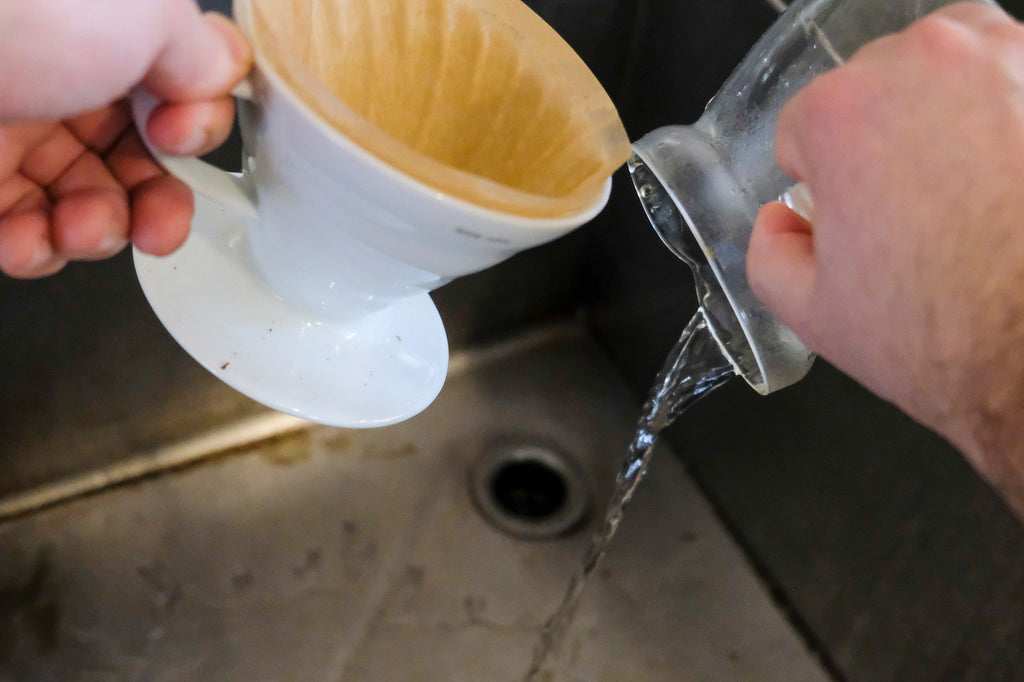
How To Brew Great Coffee At Home: Part 2
Share
By Logan Mulholland
Part 2: Technique
“Cafe owners HATE him, get RESULTS fast with these simple tricks”
Okay, for real, you’ve read Part 1 and have set yourself up with the necessary gear, so now we’ll talk about a few different techniques baristas and coffee pros use to consistently yield the best cup of coffee possible. The first tip is to pay closer attention to your Water. Any cafe utilizes a pretty intense filtration system, not only to protect the longevity of their equipment, but for the quality of their beverages. It’s always best to use filtered or distilled water when brewing coffee versus water right out of the tap. The mineral content of tap water can often have a negative effect on your final product. If you want to go one step further, there are companies such as Third Wave Water that sell dissolvable packets that when added to distilled water, create the ideal mineral content for brewing coffee. Kinda neat, huh?

Secondly the temperature of your water is imperative. The easiest way to ruin your brew right off the bat is to use water that is far too hot. The ideal temperature to brew coffee is between 205 - 195 degrees fahrenheit.

Second water-related tip, rinse and preheat your filter, brewer, decanter, and mug. Anything your coffee is going to touch, you will want to rinse and preheat. Not only does rinsing the filter remove any papery flavors, preheating everything before brewing prevents any heat from your water or coffee from being transferred to the brewing vessels.

When you’re brewing coffee, you want to follow a specific recipe. These recipes can vary in complexity, but in its simplest form it is just a ratio of coffee to water and the general amount of time in which this should happen. A standard ratio would be 1:16. Meaning 1 parts coffee to 16 parts water. For instance, 25 grams coffee and 400 grams water in about 3 minutes for a 12 oz cup of coffee.
Once you’ve got your recipe down, you need to determine which grind size is ideal for your brewing style. For pour-over coffee (V60 or Kalita) your grind size typically falls on the finer side of medium. About the 2 o’clock position on the dial of your grinder. While these are not finite values, a general rule of thumb is that if your coffee is bitter and too strong, your grind is too fine. And if your coffee is weak, watery, or sour, your grind is too coarse. This is as long as you are adhering to a 1:16 ratio.

Lastly, always be sure to allow your coffee time to bloom. The bloom is the first addition of water after you’ve put your coffee grounds in your rinsed filter. This should typically be double the weight of your coffee. For instance, if you are using 25 grams of coffee, you will initially add only 50 grams of water. You want to make sure your coffee is fully saturated, while using as little water as possible. After you’ve added this initial pour, you want to wait between 30 and 45 seconds to allow your coffee to degas. You will notice your coffee bubbling as the gases are released. Blooming your coffee lends itself to a better, more even extraction, as gas can inhibit the water’s ability to dissolve solubles from the coffee, as well as get rid of an unpleasant flavors from the trapped gases.

Those are few techniques that baristas use on a regular basis to ensure they are serving consistent and high quality coffee. If you are really serious about stepping up your coffee game, get a small journal or notebook to keep track of your brew parameters (Water temp, grind size, ratio, time, etc.) and draw your own conclusions on what works best for you!
